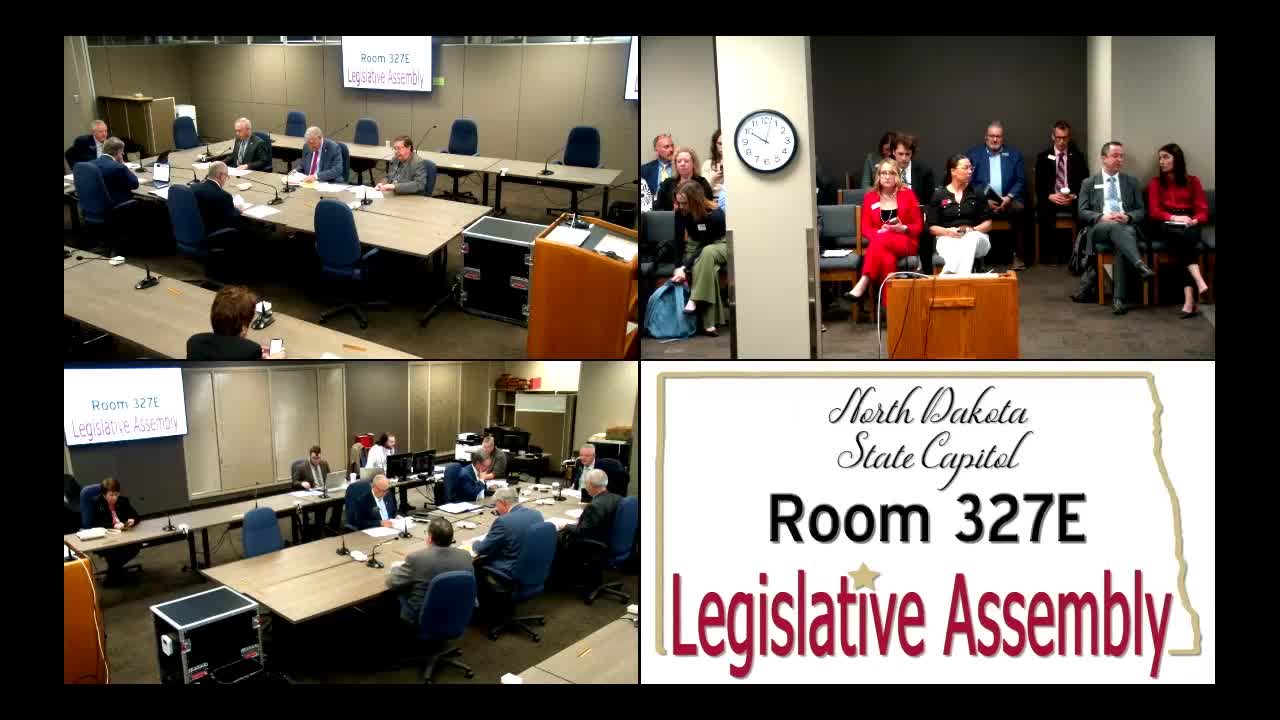Conference committee debates how 3% cap would apply to school mill levies; asks Department of Public Instruction for cost scenarios
April 23, 2025 | House of Representatives, Legislative, North Dakota
This article was created by AI summarizing key points discussed. AI makes mistakes, so for full details and context, please refer to the video of the full meeting. Please report any errors so we can fix them. Report an error »

Conference committee members reviewing House Bill 1176 spent substantial time on sections that would cap local property-tax growth at 3% and the effect that cap could have on public-school mill levies and state school funding.
Adam Tesher, school finance officer with the Department of Public Instruction, told the committee the amendment “makes the funding formula whole” so districts receive their full per-pupil payment, but levying authority outside the funding formula could still cause districts to see a net decrease in available dollars. “If [a school district] exceeds the growth, the 3% cap…we will reduce their state payment dollar for dollar,” Tesher said, describing how levies above the cap would trigger a state payment reduction and force districts to use other levies to make up the difference.
Committee members discussed two principal options that Tesher described as workable: (1) apply separate 3% caps to the 60‑mill levy that counts toward the funding formula and to the remaining levies (the 10‑mill general fund and 12‑mill miscellaneous levies), or (2) freeze each district’s 60‑mill base at current-year dollars and allow 3% growth on the other levies. Tesher said either approach could be mirrored in the funding formula or handled through expanded gap funding.
Tesher also provided context about current levy patterns: he said about 66 school districts currently max out their 70‑mill plus 12‑mill levies, while “probably a dozen school districts” levy only the 60 mills and have no extra levies to reduce. Those districts could qualify for gap funding under the proposed amendment because they lack other levies to absorb reductions.
When Representative Nathan asked about fiscal magnitude, Tesher said, “I wanna say we estimate about $30,000,000 annually in an increase in contribution of, taxable valuation. So if you look at a 30,000,000 and a 30,000,000, you're looking at about just shy of a hundred million dollars.” He cautioned that he would double-check numbers and follow up with more precise estimates.
Senator Beckettall and others raised practical experience with revenue bonds and transition funding and asked whether the proposed gap financing could recreate past complications such as transition minimums and equity concerns across districts. Tesher said the earlier transition-minimums/maximums construct was different but acknowledged the questions could reappear if districts diverge in mill levies and taxable values.
The committee asked Tesher to prepare cost estimates and draft language showing both scenarios (separate caps by levy and freezing the 60‑mill base) and to return with the estimates; Tesher said he would “do my best” to produce estimates by 3:30. No formal vote was taken on final language during the session.
Adam Tesher, school finance officer with the Department of Public Instruction, told the committee the amendment “makes the funding formula whole” so districts receive their full per-pupil payment, but levying authority outside the funding formula could still cause districts to see a net decrease in available dollars. “If [a school district] exceeds the growth, the 3% cap…we will reduce their state payment dollar for dollar,” Tesher said, describing how levies above the cap would trigger a state payment reduction and force districts to use other levies to make up the difference.
Committee members discussed two principal options that Tesher described as workable: (1) apply separate 3% caps to the 60‑mill levy that counts toward the funding formula and to the remaining levies (the 10‑mill general fund and 12‑mill miscellaneous levies), or (2) freeze each district’s 60‑mill base at current-year dollars and allow 3% growth on the other levies. Tesher said either approach could be mirrored in the funding formula or handled through expanded gap funding.
Tesher also provided context about current levy patterns: he said about 66 school districts currently max out their 70‑mill plus 12‑mill levies, while “probably a dozen school districts” levy only the 60 mills and have no extra levies to reduce. Those districts could qualify for gap funding under the proposed amendment because they lack other levies to absorb reductions.
When Representative Nathan asked about fiscal magnitude, Tesher said, “I wanna say we estimate about $30,000,000 annually in an increase in contribution of, taxable valuation. So if you look at a 30,000,000 and a 30,000,000, you're looking at about just shy of a hundred million dollars.” He cautioned that he would double-check numbers and follow up with more precise estimates.
Senator Beckettall and others raised practical experience with revenue bonds and transition funding and asked whether the proposed gap financing could recreate past complications such as transition minimums and equity concerns across districts. Tesher said the earlier transition-minimums/maximums construct was different but acknowledged the questions could reappear if districts diverge in mill levies and taxable values.
The committee asked Tesher to prepare cost estimates and draft language showing both scenarios (separate caps by levy and freezing the 60‑mill base) and to return with the estimates; Tesher said he would “do my best” to produce estimates by 3:30. No formal vote was taken on final language during the session.
View full meeting
This article is based on a recent meeting—watch the full video and explore the complete transcript for deeper insights into the discussion.
View full meeting
